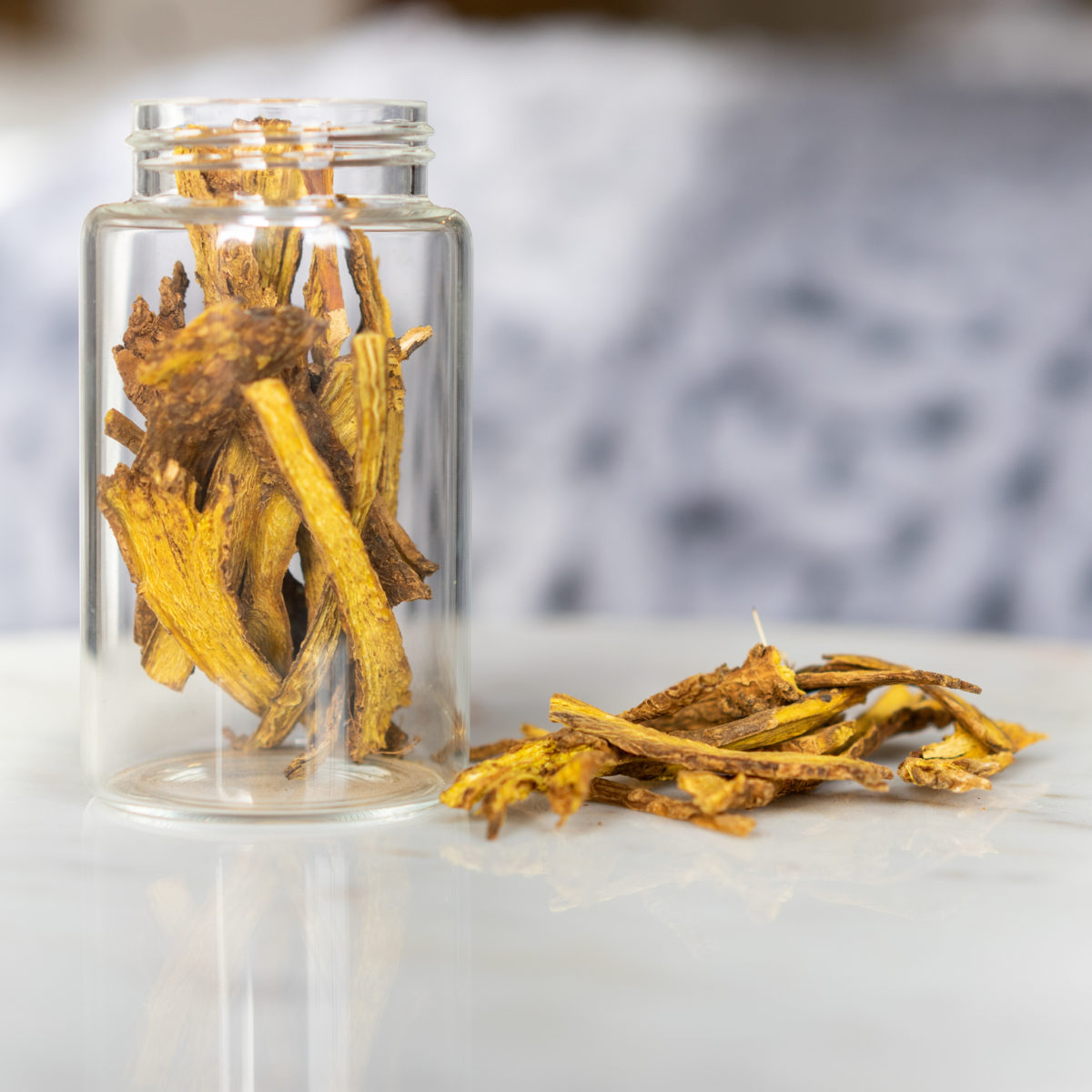
COMMON NAME (Chinese Name)
Amur Cork Tree (Huáng Bǎi)
BOTANICAL NAME
Phellodendron Amurense
USES
When taken alone (orally), Amur cork tree bark extract has the effect of reducing the frequency/intensity of muscle contractions in the urinary tract. Though there isn’t yet sufficient research to verify its effectiveness, oral Amur cork tree supplementation may help treat (and relieve the symptoms of) UTIs, interstitial cystitis, and other uncomfortable urinary tract conditions.
Topical Amur cork tree compresses can dramatically decrease the healing time and provide fast relief for trauma-induced skin inflammation and swelling, as well as irritation, contusion, and inflammation in underlying tissues.
When used in combination with magnolia bark extract, daily supplementation with Amur cork tree bark extract can cause notable improvements in mood and reductions in users’ perceived emotional stress levels. More specifically, this combined supplementation lowers feelings of overall stress, tension, depression, anger, fatigue, and confusion while also increasing overall general mood and vigor.
PREPARATION & ADMINISTRATION
Supplementation with Amur cork tree requires using the dried bark of mature cork tree plants. Oral use of Amur cork tree bark calls for decocting the bark (or taking it in pill or powdered form, though these are often less bioavailable than decoctions, infusions, and extracts). In contrast, the most effective topical uses of Amur cork tree bark extracts involves the creation of a wet compress, soaked in dilute extract, that is repeatedly applied directly to skin lesions and/or irritated, inflamed, or endemic tissue.
PRECAUTIONS
Oral Amur cork tree bark supplementation can have powerful effects on the urinary tract and related organs. Consequently, the most common side-effects of use include changes in urine output and urgency. Moreover, while Amur cork tree supplements are generally well-tolerated, taking too much may lead to minimally-disruptive and transient symptoms of toxicity, including urinary incontinence so you should consult with a certified herbalist, physician or other qualified healthcare professional before taking Amur cork.
Additionally, Amur cork tree bark supplements may be unsafe for long-term use and are definitely unsafe for use during pregnancy (they can cause fetal distress and birth defects).
REFERENCES
Flower, Andrew, et al. “The RUTI Trial: A Feasibility Study Exploring Chinese Herbal Medicine for the Treatment of Recurrent Urinary Tract Infections.” Journal of Ethnopharmacology, vol. 243, 2019, p. 111935., doi:10.1016/j.jep.2019.111935.
Hempen, Carl-Hermann, and Toni Fischer. A Materia Medica for Chinese Medicine: Plants, Minerals, and Animal Products. Churchill Livingstone, 2009.
Swanson, Gregory P., et al. “Tolerance OfPhellodendron AmurenseBark Extract (Nexrutine®) in Patients with Human Prostate Cancer.” Phytotherapy Research, vol. 29, no. 1, Sept. 2014, pp. 40–42., doi:10.1002/ptr.5221.
Talbott, Shawn M, et al. “Effect of Magnolia Officinalis and Phellodendron Amurense (Relora®) on Cortisol and Psychological Mood State in Moderately Stressed Subjects.” Journal of the International Society of Sports Nutrition, vol. 10, no. 1, July 2013, doi:10.1186/1550-2783-10-37.
Wan, Ying. “Observation for Clinical Effect of Phellodendron Wet Compress in Treating the Phlebitis Caused by Infusion.” Pakistan Journal of Pharmaceutical Sciences, U.S. National Library of Medicine, May 2018, https://www.ncbi.nlm.nih.gov/pubmed/29735457.
Xu, Yuanhao, and Sabatino Ventura. “Extracts of Bark from the Traditional Chinese Herb Phellodendron Amurense Inhibit Contractility of the Isolated Rat Prostate Gland.” Journal of Ethnopharmacology, vol. 127, no. 1, 2010, pp. 196–199., doi:10.1016/j.jep.2009.09.047.
